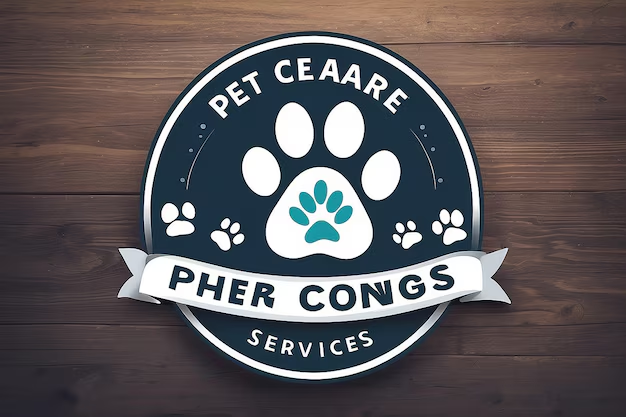Can You Purchase Pet Food with Food Stamps? Exploring Your Options
Navigating the world of food assistance programs can be challenging. For many individuals and families, food stamps offer an essential lifeline. But when it comes to feeding their pets, questions often arise about what these benefits can cover. One of the most common inquiries is whether or not you can buy dog food with food stamps. In this article, we'll explore this question in depth, offering insights into the rules, potential alternatives, and much more.
Understanding Food Stamps (SNAP)
The Supplemental Nutrition Assistance Program (SNAP), commonly known as food stamps, is a federal aid program aimed at helping low-income households purchase food. This program focuses on ensuring that families have access to the nutrition they need. However, there are specific guidelines on what items qualify for purchase under SNAP benefits.
SNAP Benefits: What Can You Purchase?
SNAP is designed to assist with the cost of groceries, but it's essential to understand the parameters. Here’s a quick rundown of what you can buy with SNAP benefits:
- Staple Foods: This includes fruits, vegetables, meat, poultry, fish, dairy, and bread products.
- Non-Alcoholic Beverages: Coffee, tea, and other beverages.
- Seeds and Plants: Used for producing food at home.
Excluded Items: It’s crucial to know what cannot be purchased with SNAP benefits:
- Alcoholic beverages and tobacco
- Non-food items: This includes pet foods, household supplies, and hygiene products.
- Prepared or hot foods: Ready-to-eat meals or hot foods meant for immediate consumption.
🤔 Key Takeaway: SNAP benefits are strictly for human food consumption, which unfortunately excludes pet food.
Why Pet Food Is Excluded from SNAP
Understanding the intent behind SNAP can clarify why dog food and other pet-related items are not included. The primary goal of SNAP is to address human nutritional needs and help individuals and families maintain a healthy diet. The program does not extend to non-food items, even those that are essential for pet owners.
Alternatives for Pet Owners
If you cannot use your SNAP benefits to buy dog food, what alternatives do you have? Here are some options that can help pet owners manage their needs more effectively:
Pet Food Pantries
Many communities offer pet food pantries that provide free or subsidized pet food to those in need. These pantries work similarly to traditional food banks, ensuring that pets do not go hungry when their owners face economic challenges.
Animal Shelters and Nonprofits
Animal welfare organizations often understand the difficulty of feeding pets during tough times. Many offer assistance programs or partnerships with pet food companies to supply those in need. It’s worthwhile to contact local shelters or nonprofit organizations to ask about available resources in your area.
Online Community Support
Social media groups and online forums can also be a resource for pet owners. These virtual communities often share information about local resources and can sometimes offer practical help, such as organizing giveaways or donations of pet food.
Budget-Friendly Pet Food Options
While it's essential to focus on quality nutrition for your pet, budget-friendly alternatives can help reduce the expense:
- Consider purchasing pet food in bulk.
- Look for sales or discounts at local pet stores.
- Explore making homemade dog food—just ensure you are meeting your pet’s nutritional needs with guidance from a veterinarian.
Practical Tips for Managing Pet Care on a Budget
Managing pet expenses while on a limited budget can be challenging, but with the right strategy, it's possible to ensure your pet's well-being. Here are some practical tips to keep in mind:
🐾 Pet Budgeting Tips
- Create a Pet Care Budget: Allocate a specific amount each month for pet expenses, similar to any other regular financial obligation.
- Preventive Veterinary Care: Regular check-ups can help avoid more expensive emergency care down the line.
- Loyalty Programs: Look for loyalty programs at pet stores that offer discounts or rewards.
DIY Pet Solutions
🏡 DIY Pet Care Tips
- Toy Swaps: Engage in toy swaps with other pet owners to keep things fresh without extra spending.
- Homemade Treats: Prepare safe, nutritious treats at home using low-cost ingredients.
- DIY Enrichment Items: Use household items to create puzzles or interactive games for mental stimulation.
Balancing SNAP Limitations with Pet Care Responsibilities
While the limitations of SNAP benefits can pose challenges for pet owners, assessing your resources strategically can lead to effective solutions. Planning ahead and leveraging community support systems can help bridge the gap between your family's needs and those of your pet.
💡 Summary Tips for Pet Owners on SNAP:
- Explore Community Resources: Utilize local pet food pantries and animal shelters.
- Engage with Online Communities: Seek advice and support from social media groups.
- Consider Long-Term Planning: Think about future expenses and prioritize preventive care.
Navigating the Path Forward
Ultimately, while food stamps cannot be used directly for purchasing dog food, numerous resources and strategies exist to support pet owners in ensuring the health and happiness of their pets. Your community can be invaluable, providing practical aid and connection.
By approaching the situation with creativity and resourcefulness, those using SNAP benefits can successfully navigate the overlap of financial limitations and pet care responsibilities, ensuring that both human and furry family members thrive together. 🐶❤️
This article aims to offer a comprehensive guide for those exploring how to manage pet care while receiving SNAP benefits, focusing on actionable tips and community-driven solutions.

Related Topics
- Am I Eligible For Food Stamps
- Are Food Stamps Being Cut
- Are Food Stamps Federal Or State
- Are Food Stamps Frozen
- Are Food Stamps Funded By Taxpayers
- Are Food Stamps Going Away
- Are Food Stamps Income Limits
- Are Food Stamps Paused
- Are Illegal Aliens Eligible For Food Stamps
- Are Illegal Immigrants Eligible For Food Stamps